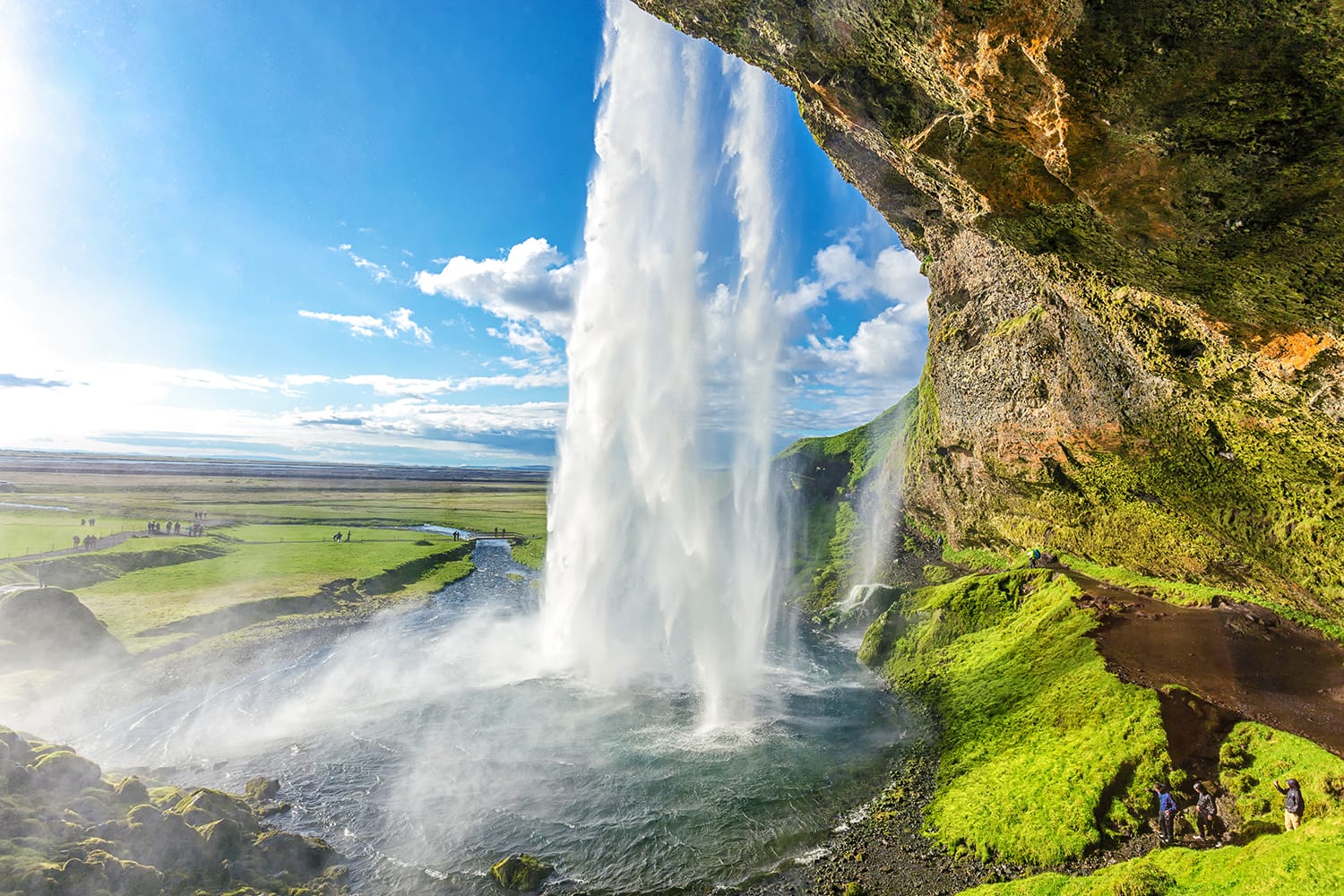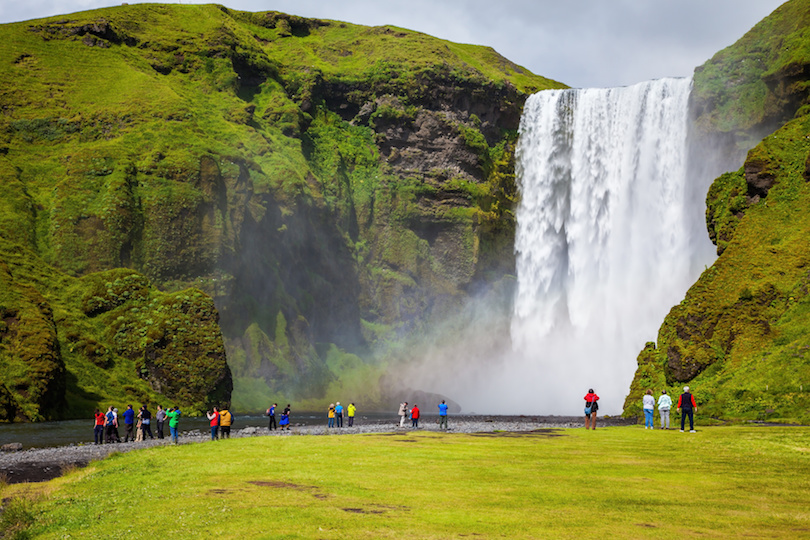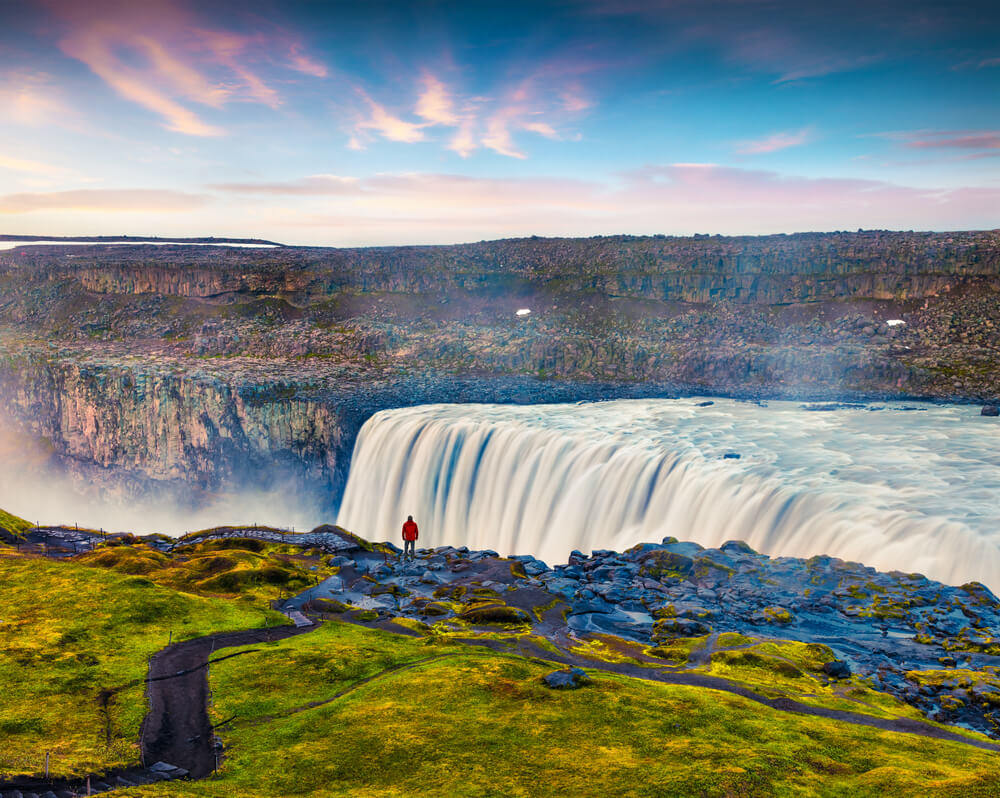
Iceland, a Nordic island nation situated in the North Atlantic, is a realm of stark beauty and untamed wilderness. Known affectionately as the "Land of Fire and Ice," it’s a place where dramatic landscapes are sculpted by volcanic activity and glacial forces, creating a tapestry of steaming geysers, cascading waterfalls, vast ice caps, and black sand beaches. This island, brimming with natural wonders, beckons travelers seeking adventure, tranquility, and a profound connection with nature.
A Glimpse into Iceland’s Rich History
Iceland’s history is as captivating as its landscapes. Settled by Norse explorers and Irish monks around the 9th century, the island quickly developed its own unique culture and political system, famously establishing the Althing, one of the world’s oldest parliamentary institutions, in 930 AD. For centuries, Iceland was under Norwegian and later Danish rule, enduring periods of hardship and isolation.

Related Articles about Iceland: A Land of Fire and Ice, and Unforgettable Adventures:
- Israel: A Tapestry of Ancient Wonders and Modern Marvels
- Türkiye: Where History Whispers and Luxury Awaits – A Guide to its Best Hotels and Unforgettable Experiences
- Lombok: Beyond Bali – Unveiling the Island of a Thousand Mosques
- Island Paradises and Urban Oases: A Journey Through the Philippines’ Best Hotels
- Norway: A Symphony of Fjords, Lights, and Ancient Tales – Your Ultimate Travel Guide
The 20th century marked a turning point for Iceland. It gained full independence from Denmark in 1944, becoming a republic. Despite its small population, Iceland has carved out a significant presence on the global stage, renowned for its progressive social policies, commitment to renewable energy, and a vibrant cultural scene. Its history is a testament to the resilience and ingenuity of its people, who have thrived in a challenging yet awe-inspiring environment.
Top Attractions: Where Nature’s Masterpieces Unfold
Iceland boasts an embarrassment of riches when it comes to natural attractions. From the iconic to the more secluded, each offers a unique and unforgettable experience:
1. The Golden Circle: A Trio of Icelandic Icons
No trip to Iceland is complete without experiencing the Golden Circle, a popular tourist route showcasing three of the country’s most celebrated natural wonders:
-
Thingvellir National Park (Þingvellir): A UNESCO World Heritage site, Thingvellir holds immense historical and geological significance. It’s the site of the ancient Althing, and remarkably, it’s also where the North American and Eurasian tectonic plates are slowly drifting apart. Visitors can walk between these continents in the Almannagjá gorge, a truly surreal experience. The park’s dramatic rift valley, crystal-clear fissures (like Silfra, popular for snorkeling and diving), and historical importance make it a must-see.
-
Geysir Geothermal Area: Home to the famous Strokkur geyser, which erupts every 5-10 minutes, shooting boiling water up to 20 meters into the air. While the Great Geysir, the namesake of all geysers, is largely dormant, Strokkur provides a spectacular and reliable display of geothermal power. The area is dotted with bubbling hot springs and mud pots, creating an otherworldly atmosphere.
-
Gullfoss Waterfall: The "Golden Falls" is a magnificent two-tiered waterfall plunging into a rugged canyon. The sheer power and beauty of Gullfoss are breathtaking, with rainbows frequently gracing the mist on sunny days. Its immense volume of water and dramatic setting make it one of Iceland’s most iconic natural landmarks.

2. The Blue Lagoon: A Geothermal Spa Oasis
A short drive from Reykjavik, the Blue Lagoon is a world-renowned geothermal spa nestled in a lava field. Its milky-blue, mineral-rich waters are a result of the geothermal seawater, heated deep within the earth. Visitors can relax in the warm waters, apply silica mud masks for skin rejuvenation, and enjoy the stunning, surreal landscape. While popular and sometimes crowded, the Blue Lagoon offers a unique and luxurious Icelandic experience.
3. Jökulsárlón Glacier Lagoon & Diamond Beach: Where Icebergs Meet the Ocean
Located in the southeast of Iceland, Jökulsárlón Glacier Lagoon is a mesmerizing spectacle of floating icebergs that have calved off from the Breiðamerkurjökull glacier. The icebergs, in various shades of blue and white, drift serenely towards the ocean, creating a constantly changing panorama.
Adjacent to the lagoon is Diamond Beach, where chunks of ice wash ashore onto the black volcanic sand, sparkling like diamonds against the dark backdrop. The contrast is stark and incredibly photogenic, offering a truly unique natural art installation. Boat tours on the lagoon provide an up-close encounter with these majestic ice formations.
4. Seljalandsfoss & Skógafoss Waterfalls: Majestic Cascades
These two stunning waterfalls are located along the South Coast and are easily accessible:
-
Seljalandsfoss: This unique waterfall offers the incredible opportunity to walk behind its curtain of water, providing a truly immersive and unforgettable perspective. The surrounding landscape is also beautiful, making it a photographer’s dream.
-
Skógafoss: A powerful and majestic waterfall, Skógafoss is renowned for its impressive height and width. On sunny days, a single or double rainbow often appears in the mist, adding to its magical allure. Visitors can climb the stairs alongside the waterfall for panoramic views.
5. Reynisfjara Black Sand Beach: Dramatic Coastal Beauty
Reynisfjara, near the village of Vík, is one of Iceland’s most famous black sand beaches. Its dramatic beauty is characterized by the striking basalt columns of Reynisdrangar, the powerful Atlantic waves crashing onto the shore, and the towering basalt sea stacks of Dyrhólaey. It’s a place of raw, untamed power and striking geological formations, but visitors should exercise caution due to the strong currents and sneaker waves.
6. The Northern Lights (Aurora Borealis): A Celestial Dance
While not a permanent attraction, the chance to witness the Northern Lights is a primary reason many visit Iceland during the winter months. This natural phenomenon, caused by charged particles from the sun interacting with the Earth’s atmosphere, paints the night sky with ethereal hues of green, purple, and pink. Best viewed away from city lights on clear, dark nights, the Aurora Borealis is a truly magical and awe-inspiring spectacle.
7. Vatnajökull National Park: Europe’s Largest Ice Cap
Vatnajökull, Europe’s largest ice cap, dominates the landscape of southeastern Iceland. The national park encompasses this vast glacial expanse and surrounding areas, offering opportunities for ice cave tours, glacier hiking, and exploring dramatic volcanic landscapes. The ice caves, in particular, are temporary wonders, sculpted by melting ice and offering an otherworldly experience of crystalline blue formations.
8. Snæfellsnes Peninsula: "Iceland in Miniature"
Often referred to as "Iceland in Miniature," the Snæfellsnes Peninsula in western Iceland packs a diverse range of landscapes into a relatively small area. Here you can find:
- Kirkjufell Mountain: The iconic, arrowhead-shaped mountain is one of Iceland’s most photographed landmarks, especially with the nearby waterfall, Kirkjufellsfoss.
- Black pebble beaches: Like Djúpalónssandur, with its fascinating history of lifting stones.
- Lava fields and coastal cliffs: Offering stunning vistas and abundant birdlife.
- Snæfellsjökull glacier: The dormant volcano that inspired Jules Verne’s "Journey to the Center of the Earth."
Travel Tips for an Unforgettable Icelandic Adventure
To make the most of your Icelandic journey, consider these practical tips:
- Book in Advance: Especially during peak season (summer), accommodation, rental cars, and popular tours can book up quickly.
- Pack Layers: Icelandic weather is notoriously unpredictable. Be prepared for sunshine, rain, wind, and even snow, often within the same day. Waterproof and windproof outer layers are essential.
- Embrace the Outdoors: Many of Iceland’s best experiences involve being outside. Invest in good hiking boots and rain gear.
- Respect Nature: Iceland’s delicate ecosystem is fragile. Stick to marked trails, don’t litter, and avoid disturbing wildlife.
- Learn a Few Icelandic Phrases: While most Icelanders speak excellent English, a few basic phrases like "Halló" (Hello) and "Takk fyrir" (Thank you) are always appreciated.
- Stay Hydrated: Tap water in Iceland is pure and delicious, so bring a reusable water bottle.
- Be Prepared for Varying Daylight Hours: Depending on the season, daylight hours can vary dramatically. Plan your activities accordingly.
- Consider Travel Insurance: It’s always wise to have travel insurance for any trip.
Accommodation Options: From Cozy Guesthouses to Unique Stays
Iceland offers a diverse range of accommodation to suit every budget and preference:
- Hotels: Available in cities and larger towns, offering standard amenities and services.
- Guesthouses and B&Bs: A popular choice for a more personal and intimate experience, often run by locals and providing a glimpse into Icelandic hospitality.
- Hostels: A budget-friendly option, particularly for solo travelers, offering dormitory-style rooms and shared facilities.
- Farm Stays: Experience rural Icelandic life by staying on a working farm, often providing a peaceful and authentic atmosphere.
- Cottages and Cabins: Ideal for families or groups seeking privacy and self-catering options, often nestled in scenic locations.
- Glamping and Unique Stays: For a truly memorable experience, consider staying in a glass igloo for Northern Lights viewing, a converted lighthouse, or a charming tiny house.
Transportation: Navigating the Land of Fire and Ice
Getting around Iceland is an adventure in itself:
- Rental Car: The most popular and flexible way to explore Iceland, especially for those wanting to venture off the beaten path. Consider a 4×4 if you plan to drive on F-roads (mountain roads).
- Public Transportation: Limited outside of Reykjavik. Buses connect major towns and attractions, but schedules can be infrequent.
- Guided Tours: An excellent option for those who prefer not to drive or want to gain in-depth knowledge from local guides. Many day tours and multi-day packages are available.
- Domestic Flights: For longer distances, domestic flights can save time, connecting Reykjavik with towns like Akureyri and Egilsstaðir.
- Cycling: For the adventurous, cycling can be a rewarding way to experience Iceland’s landscapes, though weather conditions need careful consideration.
Best Time to Visit: Chasing the Lights or the Midnight Sun
Iceland offers distinct experiences throughout the year, making the "best" time to visit subjective to your interests:
- Summer (June – August): The peak tourist season. Experience the Midnight Sun, where daylight can last up to 24 hours, allowing for extended exploration. The weather is generally milder, and all roads are usually open. Expect higher prices and larger crowds.
- Autumn (September – October): A beautiful time to visit, with changing autumn colors and fewer crowds than summer. The Northern Lights season begins in September. Days are shorter, but still offer ample daylight for sightseeing.
- Winter (November – March): The prime time for Northern Lights hunting. Landscapes are often covered in snow, creating a magical winter wonderland. Days are very short, and some roads may be closed due to weather. Embrace the cozy atmosphere and enjoy winter activities like ice caving.
- Spring (April – May): A transitional period. Daylight hours increase significantly. Birdlife returns, and landscapes begin to green. The Northern Lights are still possible in early spring. Crowds are smaller than summer, and prices can be more reasonable.
In Conclusion:
Iceland is a destination that ignites the senses and nourishes the soul. From the thundering waterfalls and bubbling geysers to the ethereal dance of the Northern Lights and the stark beauty of its glaciers, this island nation offers an unparalleled connection with the raw power and delicate artistry of nature. Whether you’re seeking adventure, relaxation, or a profound encounter with the Earth’s geological marvels, Iceland promises a journey that will leave an indelible mark on your memory. Pack your bags, embrace the spirit of exploration, and prepare to be captivated by the magic of Iceland.





